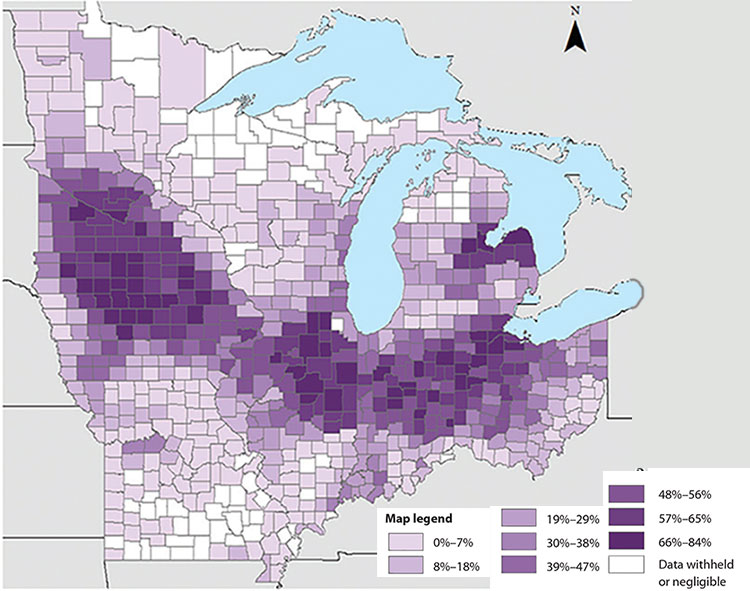My family’s dairy farm is located in Eastern Wisconsin and sits in a spot with heavy clay soil. It’s the kind of red clay that, after a rainfall, sticks to your shoes and weighs you down so much you can hardly lift your feet.
The heavy soil means fields stay wet long into spring, pushing back tillage, corn planting, and hay making. In an attempt to get out on the fields sooner, many years ago we installed tile drainage to certain areas of the farm. Tiling materials and methods vary, but most modern drain tiles are corrugated, perforated plastic pipes typically installed mechanically using a trencher or a tile plow. The pipes are available in different diameters to accommodate varying flow rates. They are typically installed at a depth of 3 to 6 feet below the soil surface and discharge into ditches, streams or wetlands.
With a limited growing season in Wisconsin and across the northern United States, tile drainage has been a method used to help soils remove excess moisture and improve timeliness of field operations. Use of tile drainage is believed to date back as far as Ancient Rome. The extent of tile drainage is fairly unknown, but staff from UW Discovery Farms pulled together some data to estimate the use of tile drainage in Wisconsin and beyond.
Looking at census data from 2012 for the Midwestern states studied (Illinois, Indiana, Iowa, Michigan, Minnesota, Missouri, Ohio, and Wisconsin), Iowa had the most total cropland with tile drainage, at 48 percent. Ohio followed closely behind, at 46 percent, while Indiana had 45 percent.
On the other end of the spectrum, Wisconsin had just 8 percent of cropland tiled. Additionally, tiling in the Badger State was considered to be more patchwork, existing in only certain areas of fields. The part of the state with the most tile drainage was in the east, where my family farm is located. If you are curious, the map below shows the percent of tile-drained cropland across the Midwest in 2012.

Why is it important to know tile drainage estimates? While tile drainage benefits poor draining soils in many ways, from improving crop yields and reducing soil erosion and compaction, studies have shown that tile drainage can also contribute to nitrogen and phosphorus concentrations in surface water.
Knowing how much tiling is out there and where it is can help organizations like UW Discovery Farms to create best management practices (BMPs) for installing and maintaining tile drainage. More information can be found in the report “The extent of tile drainage in Wisconsin.”









